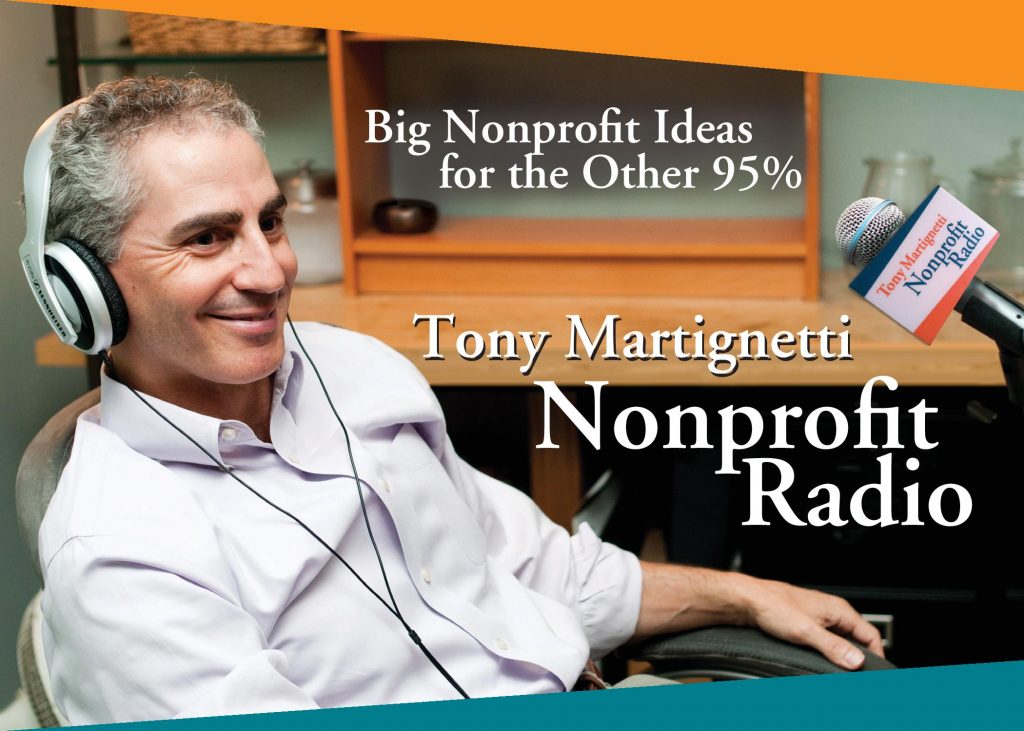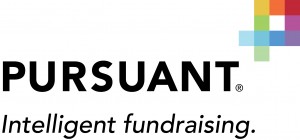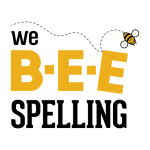
Dennis Fois: Donor Retention

The challenges are real and widespread: Aging donors; smaller gifts; and abysmal retention rates. Dennis Fois brings strategies and tactics to raise your consciousness and turn things around. Let’s talk about emotional connections, multithreading, and multichannel, just for starters. He’s CEO of Bloomerang.
Listen to the podcast
Podcast: Play in new window | Download
Get Nonprofit Radio insider alerts!
I love our sponsor!
Donorbox: Powerful fundraising features made refreshingly easy.
We’re the #1 Podcast for Nonprofits, With 13,000+ Weekly Listeners
Board relations. Fundraising. Volunteer management. Prospect research. Legal compliance. Accounting. Finance. Investments. Donor relations. Public relations. Marketing. Technology. Social media.
Every nonprofit struggles with these issues. Big nonprofits hire experts. The other 95% listen to Tony Martignetti Nonprofit Radio. Trusted experts and leading thinkers join me each week to tackle the tough issues. If you have big dreams but a small budget, you have a home at Tony Martignetti Nonprofit Radio.
View Full Transcript
Processed on: 2023-09-08T14:45:42.314Z
S3 bucket containing transcription results: transcript.results
Link to bucket: s3.console.aws.amazon.com/s3/buckets/transcript.results
Path to JSON: 2023…09…657_tony_martignetti_nonprofit_radio_20230911.mp3.230060681.json
Path to text: transcripts/2023/09/657_tony_martignetti_nonprofit_radio_20230911.txt
[00:00:35.77] spk_0:
And welcome to tony-martignetti Nonprofit radio. Big nonprofit ideas for the other 95%. I am your aptly named host and the pod father of your favorite abdominal podcast. Oh, I’m glad you’re with us. I’d be hit with Bera France if you lit me up with the idea that you missed this week’s show, Kate, our associate producer. What is up this week?
Hey, tony, it’s donor retention. The challenges are real and widespread aging donors, smaller gifts and abysmal retention rates. Dennis Fo brings strategies and tactics to raise their consciousness and turn things around. Let’s talk about emotional connections, multi threading and being multichannel just for starters. He is CEO of Boomerang on Tony’s take two. [00:01:13.14] spk_0:
It’s September 11th [00:01:46.46] spk_1:
were sponsored by donor box, outdated donation forms blocking your supporters, generosity. Donor box fast, flexible and friendly fundraising forms for your nonprofit donor Boxx dot org and by Kila grow revenue, engage donors and increase efficiency with Kila. The fundraiser CRM visit Kila dot co to join the thousands of fundraisers using Kila to exceed their goals. Here is donor retention. [00:02:14.42] spk_0:
It’s a genuine pleasure to welcome Dennis Fo to nonprofit radio. He is CEO of Blue Marang. He’s had a broad international career spanning more than 25 years developing and leading high performing multicultural teams in the technology, customer experience, relationship management and financial services sectors. He’s on linkedin and the company is at Boomerang dot Co, Dennis Fois. Welcome to nonprofit radio. [00:02:23.67] spk_2:
Thanks very much for having me on tony. [00:02:25.64] spk_0:
Pleasure. Pleasure. And uh where are you uh speaking [00:02:28.54] spk_2:
from? I’m speaking from Carmel in California. [00:02:35.88] spk_0:
Carmel, California. All right. Uh And the, the, the business is in Indianapolis, is that right? [00:02:58.75] spk_2:
Originally started in Indie? And um as I think a lot of uh technology companies post pandemic has ended up all over the place. So we are very much scattered around the US. We are remote. So most of our employees work from home and then we, we work together, uh when we meet, we have events around that. But uh I want to mention about 30% of our employees in India and the rest outside of India nowadays. Ok. [00:03:08.92] spk_0:
Ok. And it sounds like you’re intentional about getting the team together in person. Is that you, you find that, uh we, we’re, we’re digressing from our main topic. But, uh I’m, I’m, I’m interested and I think listeners are too. You, you, you find that important for uh for a uh a virtual team, [00:05:30.12] spk_2:
super important. And I think um you have to be very intentional, deliberate about it. I, I mean, I’m one of those people that um as we all went into the pandemic and we had to do certain things that were just basically necessary. I did want to take some learning side of it because we did learn a lot. I, you know, I, I was an office rat before the pandemic or first in, first, last out and I sort of noticed a few things during the pandemic. They were actually very pleasurable and I think it doesn’t work for every company. But if you take, take hours, for instance, we work for small to midsize nonprofit organizations all around the US, what’s really cool is is that if you have your employees all around the US, you can actually give some time for employees to do something locally and that opens doors so you can create a better connection. We now have employees everywhere. So if there’s a customer, you know, I’ve, I’ve got customers here in Carmel. I did, I didn’t know that. So now we can connect, we can meet for a coffee. I can do. So I’m actually volunteering some with a local dog rescue. So it creates this sort of more emotional connections. Folks can pick up their Children from school. It’s a, it’s a, it adds an interesting layer to your company that in my opinion, can create a deeper connection with employees and potentially higher retention rate. So I’m not, you know, there is a, there is a shrewd business side to this too, right? Um And that is that employee, we talk about donor attention to the employee retention is a topic too. And um uh embracing some of the learnings that we’ve taken away rather than going back to an old model. Seems to me, uh it feels like the right thing to do. So we, we’re, we’re making it work. But yes, you absolutely have to be very intense about uh when you get together and what, then you shouldn’t be staring at presentations that you need to make it about human connection. And uh and that requires a lot of thinking. Um So it’s not because we don’t really have a good model uh where we, where we can learn from each other. So we, we’re figuring it out. Yeah, [00:05:34.13] spk_0:
we’re working it out and you’re, I, I understand intentional and it’s worth investing in clearly, [00:05:39.39] spk_2:
for sure. Yeah, for sure. Yeah. [00:06:20.36] spk_0:
All right. All right. So, thank you a little digression. Uh But as you said, yeah, we’re, we’re here to talk about uh donor retention. Uh What? Uh Well, II, I think it’s pretty widely known that we’re doing quite poorly as a sector in donor retention. Uh It’s 75% or so of one first time donors are, are lost after, after that first gift, which is abysmal. I mean, it’s un it’s, to me it’s unsustainable and unless, unless you have an enormous acquisition pipeline which you’re spending a lot of money on, which is quite a bit more expensive than retaining, uh, it, it seems unsustainable but, but it, but our, I, I’ll call it, our donor mortality rate continues to be very bad. [00:10:01.84] spk_2:
Yeah. Yeah. It’s, um, if this was a business, we would be out of business. Right. Um, I agree with you entirely. The statistics are a little paralyzing at times I feel and, um, I would say, and sometimes there’s a lot of uh sort of negative communication around it. Some folks getting, getting very stressful about it, I would say in part, it’s also down to uh execution, right? Uh So what I mean is if you see uh your organization in 11 half of the organization about is about heart is what you care about what you’re passionate about. But the other part of it is the the brain part is where you do need to run it as an organization and what we are seeing a fair amount of in the small to mid size, say from 250 K to 25 up to 25 million. That is, it’s, it’s, it’s really not really approached and run like a business, you know, as a business, the moment you’ve acquired your first customer, this is the first donation, you, you be Fighting Tooth for Nail to retain that customer. We all, we all know that it’s much cheaper to retain existing customers. So, so it’s, it’s bizarre to see but, but then I started sort of digging in because, uh, you know, you get, you get to, uh, you get to ask why, well, why, why is it? It’s not that it’s been 30% that it’s 70% now, it’s been structurally like this for a very, very long time, you know, that better than I do even. And so why, why is that? And we don’t really have great answers. But for me, it comes down to a lack of establishment of emotional connection. I think that ultimately why most of us give is because there’s a level of feeling associated to it. It’s not a transaction for most people to donate. Whether it’s a small donation, there’s a, there’s a, there’s a feeling whether it’s a feeling to make yourself feel good or whether it’s a uh altruistic Phil philanthropy, what whatever the feeling is, it’s about feeling. And when you think about that, you and then you ask yourself and say, ok, what am I doing to, to help that person get more connected to my organization? That’s where it starts to unravel real quick. So, capital campaigns are about transactions and numbers. Um when we, and, and it’s very knee jerky. You know, when we, when the numbers are low low, we’ll run a big campaign and it feels a little bit like a transactional approach. Well, thanks very much. Our course was to raise so many thousands. We did it, we did the sele, but we’re forgetting the basics. Let me give you one which I found shocking statistic you and I experience this. You’d think that saying thank you when somebody’s donated would be pretty common practice, right? So I’ve just donated in whatever form I’m receiving some form of. Thank you. I’m not even talking about the most impactful way of doing it. I’m just talking about. Thank you in a way, an email, whatever it, when you look at it, the statistics are pretty bad. So we, we, we, we look at this because we, we work with our prospects and customers about how, where can we improve some things if I give you sort of an aggregate number saying thank you within say the first two weeks of a donation happens in less than 13% of cases. No, 13 [00:10:07.11] spk_0:
what two weeks? It’s supposed to be 24 hours, 24 hours for a perfunctory and then maybe there’s a follow up, you know, I like to see a follow up call or a handwritten note or something, but the perfunctory should be 24 hours and you’re saying two weeks and it’s 2 13% [00:11:15.01] spk_2:
13, 13. And then if we lengthen the time to 30 days, at which point, I don’t even remember what I’ve done to be honest with you, but then that number goes up to 18% 18. So it’s, it’s a crazy number if you think about if you set that number up against 75% 1st time donor retention rate issues, right? And you say, say, but we never say thank you to me, rather than looking at really structural societal, economic reasons for why things are the way they are, we should really start to look at, are we doing absolutely everything we can to establish an emotional connection? And frankly, if you miss a thank you. Yeah. Yeah. It sort of feels like you’re, you’ve, you’ve, you’ve got a, you had a false start, right? Yeah. Now [00:11:35.34] spk_0:
you’ve, you’ve, you’ve blown the, you’ve blown the opportunity if, if, if you’re responding with a, a even a perfunctory. Thank you. As I said, I’d like to see 24 hours but within 48 hours that you’re going out to two weeks and it’s only 13%. Uh, and what, what is, what is that? I’ve never heard it that low. That awful, what, what is that based on that? That’s boomerang clients. Yeah, [00:12:48.42] spk_2:
we look at and prospects. So we, we, we, um, uh, I, I’ll give, I gave you sort of an aggregate number. Some folks are much better, better at it than others, but you’d be surprised. It’s certainly not in the, it’s never in the high 80% or something like that you’d be. And there’s always a reason why people say I didn’t have whatever address or there’s always some reason, but there’s also no reason because if you and I would be running a business, there’s always a way to say thank you to someone. Right. So, so it, it feels to me, uh, there’s plenty of, you know, hurdles that we can keep up with. I didn’t have the right email address, didn’t have the right phone number or something happened. I didn’t do it, whatever, but it’s structurally super bad and it’s always in the low single digit percentage across the board. In fact, we often, um, engage with prospects like that when we look at sort of, uh, they might have other systems or other tactics and as they’re looking for another system, they want to also improve the processes. Right? And we often do these sort of assessments where we, um, uh, that’s what we do. We actually make small donations on behalf of us and we should see we track what, what happens and that’s, that’s how we get that information. And, uh, [00:13:14.60] spk_0:
if you, if you’re not responding within 24 hours, I think it looks like you just don’t care. Right. Talk about grabbing someone from the heart first, you know, to, to give them a feeling, AAA warm feeling anything more than 24 hours. Looks like your gift doesn’t really mean too much to us. In 30 days. 30 you may as well not, I don’t know. To me after two weeks, you might not even bother it. You’ve already, you’ve already blown the relationship unless I don’t know unless you call with, uh, uh, some kind of catastrophic story, uh you know, which is not, not likely, uh you’ve blown it, you’ve blown the opportunity. [00:15:41.99] spk_2:
Yeah, completely. And, and, and we often get uh a little bit of setback when you sort of look at and say, hey, am I supposed to say thank you? Like do I, what, what does it matter if I say automated email, for instance, as a thank you to everyone that’s not very personal, it’s not very emotional. And I agree. But if you start by saying thank you to your first time donors and have different means to engage with your retained donors, that would be a good start. You can’t tell me that you, you have so many first time donors that you can’t deal with the volume like that. That seems, that seems like a that’s a very high bar to achieve. That’s not what we are seeing, right? So I think if you just narrow it down and say just hit the notes I had um I wasn’t, I had a, a charity rally where we had sort of a thing with old cars and this was to support a local dog rescue. And uh we did a bunch of things like auctions and stuff like that and we made a donation and it was so amazing that the following day um I got a voice mail so they didn’t get with me, but that voicemail was fantastic. It was just a voice mail from the executive director and it was just like, it was just a, a very nice warm, I heard the voice. It made me feel super good. I thought I did the right thing and, um, and now there was a, you know, a typical newsletter that follows. So I actually read that newsletter now. Right, because I’m, I’ve got something there. Actually, I love that lady. I love how passionate she is about making sure that these dogs end up in the right homes and how deliberate she is about all of that. Um And she’s, she’s got me like they’ve got me, I want to do more and, and I thought it was as simple as just dropping me in a a voicemail. She didn’t even try to call me. It was just a voicemail straight into my inbox, but because it was a voicemail and not an email, it was much more personal and I’m pretty sure that day maybe from that event, let’s just be generous. Say that she had five or six new donors, right? New first I done this. Is it really that hard to to send five? Thank you. Um I don’t know, seems like it seems like it’s doable. [00:15:45.98] spk_0:
Now. You, you’ve mentioned this dog rescue uh a couple of times now. So why don’t you shout them out properly? No, I [00:15:50.85] spk_2:
can’t. I can’t because this built a pool. They, [00:15:57.27] spk_0:
they, they all right, you’re a big, you’re such a big dog lover. You can’t shout out to you. All right. All right. All right. Well, we know we [00:16:03.26] spk_2:
have the opportunity though, tony, but I think I’m gonna get it. Um I’m gonna get it wrong somewhere with someone. It’s a very [00:16:10.28] spk_0:
small town, right? We know we have a dog [00:16:46.14] spk_1:
lover. It’s time for a break. Donor box, quote, donor box text to give led to one of our more successful fundraising events, a concert sharing the keyword short code and scannable QR code made giving easy for our supporters. And they did give that’s from Josh Young executive director of hydrating Humanity Donor Boxx, helping you help others donor Boxx dot org. Now back to donor retention. [00:17:09.28] spk_0:
So in with automation, I mean, this, you give a gift, you have to provide an email address and and or a phone number so you can send them an email or a text again, this perfunctory, you know, within 24 hours. I I just don’t see any reason why with, with automation that are pretty standard, right? And you should be able to send an immediate [00:20:01.36] spk_2:
technology problem. It’s not a technology problem. There are no technological hurdles here. I mean, systems might be difficult to use and what have you but you can, it’s not rocket science. Once you’ve done it, once you can, you can figure it out that I think the, you know what it’s the way I think about it, which is fascinating. I think we have three big challenges that we need to think through. They’re gonna be pretty structural. We’ve got aging donors, we’ve got declining small donations. So from uh gifts up to $100 and from 100 to $500 are down across the board and we have a very hard time retaining first time donors. Those are the three like big uh themes if you can call them that or headwinds, whatever you wanna call them that we need to think through. Ok, these are gonna be here for a while. How, how do I, how do I respond to those? Right. And the bizarre thing is that because we have aging donors, we need to think about our uh our donors as a whole. We need to think about. Ok, how do I tap into younger donors? How do I tap into, how do I broaden my connection to household and not have a singular donor within a household? So you need to think about that. And it’s remarkable then that when we’re presented an opportunity to have a first time donor that we would, we wouldn’t be obsessed about retaining these donors in some way either by and if and if the friction is around the donation, I’d rather take a small recurring donation over a haphazard first time donation. There’s a, a strategy too. So we have all the tools in place. It’s just that it’s almost like we are applying principles that we have. We, we, we’ve applied for years to today. But today things are really starting to accelerate. So when we think of don, you know, frankly dying donors uh and not being part of estate planning and such, we really need to think about tapping into different generationals. And now that generation uh you have then you have other questions which is, is email, the best medium, et cetera, et cetera. But um uh there is an amazing opportunity there in my opinion, to, to, to tap into because we are getting the first time donors in, we are getting them. So it’s not like the next generation is nonn generous. It’s quite the opposite. Actually, the generation that we all love to hate the Gen Z and the millennials are extraordinarily driven by impact and doing good for the world. They are probably one of the most in tune generation. We’re just not connecting with them and uh and their rotation rates will continue to show what they’re showing if applying these type of uh methods here. So it’s a, it’s a challenge. [00:22:16.22] spk_0:
I, I wonder if some of the problem with connecting with the millennials and Gen Z is that the leadership are baby boomers and they’re not listening to their own millennial and Gen Z employees or the or they’re not even seeking the advice of those younger folks about how to, how to connect the younger donors again. Emotionally. I, I think, I think if you start with the heart the brain follows. So you had that heartfelt genuine sincere voicemail, just a voicemail and it, it, and it’s drawn you in and that’s so that’s an example. Um They’re so they’re not, they’re not taking the advice. And I think these boomers of which I’m one, a young one, a very, a very, very, very, very, very, very, very, very young boomer, but I am just barely a baby boomer. You know, uh the generation is not taking the advice of younger folks, seeking the advice of younger folks, but how to connect with younger folks and that and that they are your future planned giving donors. Planned giving is what I do, fundraising consulting and strictly in planned giving. So if you wanna have that pipeline of long term, you know, the the ultimate, the ultimate gift for a lot of people is in their estate plan. If you want to benefit from that ultimate giving, you need to be treating these folks well from the, from the jump from that 1st 24 hours that we’re talking about and, and then beyond and you know, we’ve, we’ve, we’ve broadened beyond the, the the initial thank you. But um you know, that’s, I mean, that’s a again back to a business, I mean, that’s how a business maintains a, a pipeline of customers. But you know, you have, we have to have a pipeline of prospects right throughout the, throughout the age spectrum, throughout on all the different ways of giving monthly sustainer and major and people give just once uh once a year or, or give just to a particular program, just give around the gala. If, if we’re suffering an event like that, I don’t want to get into the difficulties of event, major event fundraising. But you know, we’re, we’re just not, we’re not, you’re right, we’re not creating like think of it like a business and we’re not, we’re not treating our pipeline of prospects and donors appropriately. [00:25:47.71] spk_2:
So, you know, what strikes me is, um, a a because it, I, I can imagine that it’s, listen, it’s hard. There’s a million things to do your research constraint. Um uh it’s, there’s a, there’s high stress involved with fundraising, but there seemed to be some opportunities to rather than try and figure it all out on your own. There’s a, a dozens and dozens of millennials that want to do volunteer work and instead of doing, letting them do volunteer work on your core nonprofit course, why don’t enlist them to help you with the communication using social media? And just the, there’s so many of these, of that generation is so in tune with it. But what I’m seeing over and over again is we are recruiting them for helping them with the local dog rescue. I had that conversation with them. I said, I noticed that one here. This is why I, um I, I’ve been a very long time. Uh, uh donor of and they, what I noticed is, hey, I get all these lovely updates about dogs that need a home and placement. But I hardly ever see what happens after and the real reason why, like, what I care is I wanna make sure that those dogs go to the right place and I believe in your ability to do that. And that’s why I, I, I’m prepared to sort of help out. But the story that I really want to see is a happy dog in a happy household. But I never see those stories. Yeah, occasionally there’s one in the newsletter but you’re placing like so many dogs and, and then the penny drops, as we would say is, um, why don’t we get some of the, there was a volunteer, like there was a, there was a girl that was sort of helping with the shelter and, you know, helping to take care of the dogs and getting them ready, you know, making them look good for, uh for these, uh for the visits. And she was very, very skilled at social media. She was on Instagram. She was all this book and it, and she saw them well, now why don’t we just get these new families to record a little short video on their iphone uh after, you know, a couple of days in the home, like the first week, you know, the first week with Fluffy and it needs to be a very like badly shot video not produced. It is what it is. And then they said, what do we do with the video? You just give that video to me. I’ll take care of it. She said, and it was wonderful. And within a honestly, within a week, I think it turned into this whole thing that now they basically say, hey, as part of the placement of the doc, we need you to give us an update on how it’s going. And that update is a simple little video. They send it to it that now goes on the social base that gets connected to the newsletter, goes on the website. And now there’s a whole different audience that they’re tapping into and these dog stories are starting to do their rounds. Now, what did that cost? Not very much. Uh would a ba baby boomer be very good at executing that? Probably not. But you don’t have to like, you can use volunteers in different ways that you can use volunteers to help you with reach. And in fact, might actually be more helpful because we, that generation probably connects better to their own. Then sort of a grumpy, old boomer or young boomer uh grumpy. [00:25:52.68] spk_0:
Now you added grumpy. That was not, it [00:25:54.84] spk_2:
was affecting to myself. [00:27:08.24] spk_0:
All right. Well, you take that on yourself. Fine. I take about grumpiness. You, you threw that in, you tried. All right. Yeah, it uh it just, you use the, that you have, whether it’s volunteer, it’s on your team. Uh Maybe it’s a consultant. You know, what you’re describing is, it sounds precious. The, the production value is meaningless. It’s, it’s the, it’s the substance and, and, you know, they, they probably now, you know, or they, they will soon have courses of these videos videos that they can repurpose on Instagram, tiktok, Mastodon, youtube, uh their, their own site, of course, uh uh links in newsletters, you know, uh 30 a AAA compilation of uh you know, 32nd videos or something. It’s, and, and that, and that’s the impact that, that, that’s the impact that a lot of people want to see and, and especially well, donors really, I think across the age spectrum are much more cognizant of impact, much more interested in impact. But I, I think younger folks are even more so um Dennis, let, let’s talk some more about some tactics of drawing in making that emotional connection, getting the heart and, and letting the brain follow. [00:32:02.04] spk_2:
Yeah. Um um a, a couple of things um on that. I think we, we as an industry rely very heavily on email and I’m not so sure that’s a great idea. Um I think email is useful and helpful, but I don’t know about your inbox what that looks like. Um Mine looks pretty challenging. I’ve got a work one and I’ve got a private one and I take a deep sigh in the morning. When I have to sort of make weed my way through whatever, you know, irrelevant stuff, it starts with deleting a whole bunch of stuff and then hopefully I haven’t deleted it too much. So, email is challenging to get attention. Number one and two, it’s actually not easy to make email, uh, create a sort of reinforce of establish an emotional connection because you have to be actually quite good, quite good with, with words. And that’s a high bar, I think um that to, to there are some science out there about how you should write. I mean, the dr is always right about these stories. So the more of these stories you have to your point on impact, the more you should do it. But relying on email alone and then thinking that you have done it, I think is a pretty big mistake. Um I think you have a I like email as a uh uh you mentioned a couple of idea of uh of things like a newsletter or an update. So something that we basically uh is periodic. Uh So, hey, we’re here, this is what we’ve done. That’s great. That’s wonderful. Um But I much prefer that folks and we start to see that experiment with different media and voice, for instance, is still very much underutilized. So people don’t really use Zoom voice. I I there was actually an email that came in for someone that just recorded um a blurp like they had like a, it was like a zoom like we’re doing now today and they included that zoom into it, but there was no video, it was just voice and they were just telling, uh, there was an update of the month but they said we’re gonna try something different. We’re gonna, I’m gonna, so the executive director spoke on the zoom. I thought that was nice. So it was, so that was unusual. So I had a voice, I had him talk. There was a bit of a, a funny moment so you can hear them laugh as they said that I, I had it plugged it in my airpods as I was walking so easy. I don’t have to really uh you know, be concentrated on my, on my desk to read it all. So I thought it was a great, great way to use it. Video is still very underutilized. We all like, you know how it is, it’s not that difficult anymore to uh to have the video. You can still use your email to send it. Um And so I think when it comes to tactics that we have to be careful not to rely on one and just set it and forget it, right? So you basically say, oh yeah, I’m I am communicating with my donors. I’m sending an email. I send a, an um a newsletter every month. Uh Yeah, you know, is that the bar like is the, what is the latest. What is the late, what have you tried? What other things have you tried? Do you know whether they open it and read it? Do you do? Do you have that? Because nowadays we know? Right. We have a pretty good idea of, uh, whether folks read it or not and then what do you do with that information? You just continue sending stuff the other question I have. So that’s one thing it is about the tactics is don’t rely on a single attack. They just set some sort of a goal that every year or every quarter of it, whatever it is feasible, you try something new and see if it sticks, just stick it and stay with it for a few months but just try it, try it. Um, the other thing I would say is as much as there’s a reliance on, uh, the medium, email, phone video, whatever, there’s also a reliance on, uh, the recipient, which is who we’re sending it to. What I find. There’s a concept in business that’s called single threading, um, which is, uh, never referred to as a positive thing. It’s a bad thing. The single, single threading. So what we, what, what it means is that you’re basically when you’re trying to, uh, connect with an account with a prospect, it’s usually a business. And when your single thread in the account, it means that you’re only speaking with one contact in the, in that organization and you know, that a decision usually has to make with multiple people. And very often, even if there’s a CEO CEO would want to make sure that her team is consulted, et cetera, et cetera. So whether these folks are making, whether others are making the decision or influences is irrelevant. It’s very rare that one person calls all the shots. It’s much more common that multiple people have to be engaged, consulted and informed. [00:32:50.86] spk_1:
It’s time for a break. Kila increase donations and foster collaborative teamwork with Kela. The fundraiser, Crm maximize your team’s productivity and spend more time building strong connections with your donors through features that were built specifically for fundraisers. A fundraiser, Crm goes beyond data management platform. It’s designed with the unique needs of fundraisers in mind and aims to unify fundraising, communications and donor management tools into one single source of truth visit, Kila dot co to sign up for a coming group demo and explore how to exceed your fundraising goals like never before. It’s time for Tony’s take two. [00:34:17.23] spk_0:
Thanks Kate. This week’s show gets published on September 11th, the anniversary of the day that changed our country changed the world profoundly. We all remember where we were, I was uh an employee. It was the dark days of uh employment for me at Saint John’s University in Queens, New York and Saint John’s is up on a hill and we could see downtown Manhattan. So it was in a distance but we could see it happening live. We were going between watching, live and, uh, for real and watching on TV, you know, more close up, of course, but everybody’s got their story of September 11th. And, uh, I think we should just, um, use the anniversary as a, a time to remember to keep in mind the victims, the immediate victims, uh, this week, uh, and also, uh, not only the ones who died that day, but those who are still dying from their service there and from exposures, let’s just remember those folks this week that is Tony’s take two. OK. [00:34:23.98] spk_1:
You reminded me of a saying I once heard they’re gone but never forgotten. [00:34:27.55] spk_0:
Yes. Yes. [00:34:30.29] spk_1:
Let’s go back to donor retention with Dennis Fois. [00:35:31.20] spk_2:
So you want to become multithreaded to increase your alt of success, in my opinion, the same is true for a household. If you solely rely on the first contact that you ever had, that is the the donor that has actually made the donation. But you know that they’re part or you might not even know that they’re part of a household and you’re not making any efforts to deeper connect and create more contacts in that household organization. You’re missing a big, big, big trick and a big opportunity because I think that the more we can establish an emotional connection at the household level, the higher, higher the chances that things make sense as part of a state planning this is a long drawn process but being simply relying and only communicated to a single donor, in my opinion, is a risky affair. And so doing events where my partners or Children are involved, do whatever you can. You obviously can’t ask who else is in your household. Give me their email addresses, understand. But there’s not, but you could make events deliberately and purposeful, designed to bring the family together, to bring them all in and then start to collect data as part of that event, right? Uh I don’t see a lot of that. Yeah. [00:37:28.92] spk_0:
Yeah, it’s consistent with your first ideas, not be singular channel, you know, be multichannel, uh be multi thread within the, within the household. Exactly. Yeah. Iii I see that play out a lot uh in events where the there might be a couple there. Again, I do planned giving. So the events I’m going to are usually for older folks. Uh not necessarily plan giving age, but plan giving prospect age. And there are a lot of couples uh whether they’re married or partnered and I see a lot of conversations with one person in, in the couple and it’s, it’s usually, it’s usually the male in, in a, in a, in a traditional hetero couple. Um And, and the, the female is, you know, largely ignored but, you know, but whatever the couple dynamics, I i it’s a mistake to just be talking to the one person because you, you you want the support, you want the buy in, of, of, of the couple. Um, just, it just, it just makes things so much smoother. Uh, you, you reduce any contention around giving that might be playing out in, in the, in, in the home that you have no idea about. You know, so don’t, don’t talk to one person to the exclusion of the other person in, in the couple. Right. Iii, I see that a lot and I bet in person events, right. That, that’s a mistake. [00:40:20.01] spk_2:
That’s a big mistake. And I bet tony that it’s if you were to go back, even if they’ve spoken or connected in some way, I bet that if you go back and look at the database and say, let’s say the household and we had a nice conversation with me and my wife that when you look back at the database, my wife’s contact information is not in that database. Right? So, because it’s again, none of these things happen with one conversation that like it’s, it’s very rare. I mean, as a magical when it happened, it’s wonderful, but it’s usually it takes time, it takes repeated connections, interactions over a long period of time. And so the best chance we have is if we broaden our reach, but not just broaden our reach, we’re constantly trying to find new people all the time. To your point, this big funnel machine. But if we can expand within our existing donors, we absolutely improve our retention rates. In reality, if you improve your retention rate by about sort of 10% or so, you triple the lifetime value over time over your, over your donor base. So it’s, it’s, it’s, it behooves upon all of us. How do you improve retention rates? Well, it’s not just constantly talking to the same person and sending them more stuff. That’s, that’s, that’s, that’s, you know, that, that has a diminishing return. So, and I feel that we probably need to talk more in the industry about it and share ideas or how others are doing it and talk more about these tactics because I feel that some of the uh some of the nonprofit organization that we talk to want to do it, they, they, they, they’re not afraid of experimenting but sometimes sort of lack the applicable ideas because the industry has started to become quite academic and we talk about things, you know, theoretical concepts and big numbers and scary numbers and frankly paralyzing numbers at the time, it like doesn’t inspire me to act, right? And I think we should maybe need to do a slightly better job as an industry. And I think you do that with your things like your, your podcast where you get deeper into the things and just ideas that I can sort of, you know, walk away but give me one or two ideas that I can do tomorrow then and I can at least I can sort of figure out whether it works or it might work for some, it won’t work for others. But if you don’t try you don’t know. And the reality is there’s no one approach that will work for everyone but relying on email alone and only talking to your donor is a guaranteed, guaranteed, uh, path that sets you to become part of the statistics. Yeah. That’s basically how they’ve been built [00:41:00.80] spk_0:
on the wrong end. Yeah. Yeah. It, it’s shallow. It’s, it’s not a, it’s not a hard, uh, it’s not a heart to heart connection. Um, you know, as you were, as you were speaking, I was thinking, you know, when, when you call, if, if the, if the non, the non primary donor answers, do you just ask for the donor or do you say? Oh, hello. You know, and wouldn’t it be great if you could hearken back to the, to when you had the conversation at the last event with that other, the, the other person? Oh, it was such a pleasure to meet you, you know, or, or do you just say, you know, can I, oh, hi. Can I speak to Dennis? You know, that, that, that’s, that, that’s, that’s a, uh, it’s a turn off. It’s perceived by, by both people in the couple. Uh, it, it may not ever be spoken about or, or even worse. It might be, but it, it’s detrimental in either, in, in either case. Um, it’s just a, you know, it’s, it’s fundamental respect for, for people. [00:42:38.17] spk_2:
Well, I agree in respect but also, um, sound business mind. Right. If you want to, like, if, if it’s, it’s, it’s, it’s a good business practice. So there’s, there’s the head and the heart that comes together if you were to think that any time that you connect with someone, the donor, but you get somebody else on the phone as a prospecting opportunity, that might be the right mindset. You know, because you, that’s how you treat a new event. When you, when you with this new families and new folks coming be all overdose, right? To tell the story and why you started the uh the organization. Uh the same is true for this prospect with the big benefit that it’s a warm prospect. It’s not a cold prospect, right? Because there’s no connection. So if you think about how do I increase donation sizes, how do I become maybe part of recurring giving? Those are, those are the situations where that happens where both both partners have an emotional connection with the cause and stimulate one another and say, hey, this is something we want, really want to support as a family now that always leads to more sustained and higher donations. Um First, as being one of the two partners that supported because this is their uh their charity of choice. [00:42:48.49] spk_0:
Other, other thoughts Dennis about tactics that folks can at least experiment with. [00:45:17.14] spk_2:
Um, yeah, well, so what is, what it has been pretty successful? This might be, um, a little sort of personal but what has been successful here locally? Um, II, I, it was actually quite interesting. So we, um, there are these groups of, uh, people that get together for hobbies, in our case, I’m part of a club that likes old cars. So old people and old cars come together once in a while and they, they do, they take whatever excuse on the wrist to sort of drive these things. And, uh, but we wanted to add a little bit of more depth to it. So we started to, um, to seek out whether there were uh interesting nonprofit organizations around us that we could support somehow. So to make the, so we would basically say, hey, as part of this drive, there is a cost to the drive and that this, this cost was basically fundraising. So we would raise through these drivers a donation and we would then have a, um, have that money go to a, uh a charity of choice, right? One that we would say, hey, this month we’re gonna be supporting this. What I found remarkable is that very few nonprofit organization had identified that a lot of these events were happening. I’ve got a local tennis club, there’s a local, there’s a very, very big car community here in Carmel and Monterey. It’s just a thing. So everybody that lives here knows that. But what I found staggering is that it was actually hard work for us to find. We actually had to seek out nonprofit organizations and explain that we wanted to do some events. And then once we had that people were very generous and said, oh, we come over and speak, we can say a few things about what we we will do and we would attach an auction, little auction, something around to just make sure that these are affluent people. So, you know, making donations is, is a, is, is not a high friction situation. Um But what I found remarkable and a missed opportunity which we’re now making more available is tap into these um communities. So, you know, there are in Indie, it’s the same in Indianapolis. There’s a lot of communities that have certain themes that folks that get together, a lot of them would be very happy, supported co courses. And so what I’m seeing, but [00:45:34.49] spk_0:
pardon me? But these are essentially giving circles. They are. And I, I had the, I had the evangelist for giving circle Sarah on the show just within the past six weeks or so. Um So, you know, whether it’s a car club or a bunch of folks who meet once a month in someone’s in rotating homes or, you know, or it’s some other, some other uh organization that’s willing to do fundraising and, and granting you’re, you’re essentially, you’re talking about giving circles in, in your community. [00:49:25.30] spk_2:
100%. That’s a wonderful way of, of uh putting it and uh talk about building a funnel and building connection into, into your community. Uh And they very often become repeat themes, especially if there is an emotive connection with the individual. If the executive director does a good job at presenting, being there, telling the story of the organization, you know, you, I would say it’s almost guaranteed, there’ll be some sort of successful. So it’s really worth doing. But again, it’s about being proactive and seeking those out, making an effort to actually find out what, what is around me. Uh That seems to me, I was blown away. Uh It’s now become a thing with us or every month. There’s something that sometimes there’s twice a month or something. Um But what is also interesting is that most of us end up giving to the ones that we are really connected with, right? So there is the, the event itself that produces us, but some of us actually get, we had a, we had a lady that um had a very traumatic situation with her husband and a child and a child had a disease that was very difficult to cure. And it sort of inspired her to create a, a organization or profit organization to help folks with, um with a, in a similar situation. And she, when she told her story, I most most of us couldn’t keep it together to be honest. So it just becomes like a different level of connectivity and accountability. And so, so I I, no, no, I wanna help you. This is crazy. There is no support from um uh health care that this is sort of under recognized. These people are out, out, out, out, all out on their own. Actually with a little bit of money, a lot can be done. So you start to connect the dots to say what I can actually have a real impact here and help to make a situation better. I can fund. If I can fund this lady, people’s life will change. And when you get to that sort of level of this is where my money or time can go and this is the impact I can achieve I want. II I mean, I’ve had a reluctant to say donor for life because we know that that’s a difficult thing, but that’s a level of connection that no email in the world, no phone in the world can be, can hope to achieve. And so if you’re not out there connecting with an audience like that new circles, um you’re making it yourself very hard, I think to find these people that are, that are then spreading the word because I didn’t talk to all this about it. So we know how that all works, right? So I would say those are still very underutilized idea. So this the this idea of using multiple channels of communications expanding within the families, sort of the multi threading thing that we’re talking about and exploring the circles rather than treating individuals of transactions. We have a lot of room for improvement when it comes about executing and doing good, better, best on those. And so in a way, the statistics that we talked about are not that surprising because frankly, if you’d run a business in the way we are running as an industry nonprofit, these are the statistics that you would get. It’s like fast in, fast out. Yeah, it’s, it’s a classic bad business model like, [00:49:30.53] spk_0:
yeah, uh Boomerang wouldn’t survive that way. No, no, [00:49:33.29] spk_2:
no, no. My board would swap me out real quick. You had [00:50:47.46] spk_0:
clients, you had clients for a year and, and 77% of them uh stayed only that long. Um Yeah, loyalty, you know, it’s, it’s all, it’s all the heart, loyalty, connections. Um speaking from the heart, respecting people. And then, yeah, you know, and, and so I, I speak kind of altruistically or, or maybe not academically but altruistic. Uh and uh and lofty and, you know, you remind us that it’s also all good business. It’s all good business to, to think of the partner as a, as a, as a prospect uh to, to have folks telling their own story in a, in a simple iphone video with low production value from the home with dim lighting and, and the sound is cutting out and the Children are in the background but the, you know, but the, but the newly placed dog, uh, pet is, is, is, is barking wildly and, and that’s the, you know, that’s the impact. That’s perfect. So, it’s, it’s, it’s, that’s the, those are the moments that are sincere and genuine, connect with our hearts and end up being good business. [00:53:29.50] spk_2:
Yeah, I could not agree with you more. And, um, that head and heart thing, we, I think when we, when our organizations get la get larger, nonprofit organizations get larger, you, you, it’s ok to think of a part of it as a business. It’s ok actually because the more effective the organization becomes the greater the impact you can achieve at our company at Bloomer. We, we have often sort of struggle with that balance where you sort of say, well, do, is it all about growing revenues? Is that basically the, the mark of a success for us or how do we measure impact? But the reality is you should not put pit those two things against each other because if you could see uh fundraising volume or revenue, you could see that as fuel and you need fuel. We need fuel. So you wouldn’t, you wouldn’t shortchange yourself or making sure like you feel really good, you’ve done this wonderful thing, but it doesn, doesn’t scale because it requires you to do it over and over. It can scale. But now you’re not putting fuel in a tank and we, we have to have few because the more fuel we have the greater the impact that we can choose the more resource. So the problem is that we have in this, in this industry, it’s difficult for us to attract and retain talent. So as much as we have a donor retention problem, look at the employee retention problem that we have in this industry. And if you become more successful at creating scalable and repeatable initiatives, which you’re experimenting, you’re trying things, you’re making these emotional connections, we can attract high quality people into the organization that can sort of sustain and increase that momentum. So I, I often, when we talk about this, it feels like, yeah, but you can’t run a nonprofit organization like a business. And I said, well, why not? Um why not? Um You, you know, if you, I, at some point, I’d like to work in an organization like this, but you better believe it that I be, I’m gonna be very intense in the work. I’m not gonna sort of be relaxed because I work in a nonprofit because I’m gonna be super intense if we’re wasting money or if we are not following up on things or something goes out, that is a little bit half baked. That is not a high standard. Like why, why wouldn’t those things apply? Isn’t that what makes things better, like striving to better standards doing something, trying something different growing as an organization. So I think we have to be destigmatize the, the brain part uh in this industry and say that it’s OK to pursue growing as an organization because that growth allows to achieve far greater impact than the individual to start. The organization ever thought was imaginable. So we growth has to be part of an obe of the objective of the organization. [00:54:20.17] spk_0:
Dennis. I’d like to leave it there. Thank you, tony and II I unical agree with you about perceiving our organizations as businesses. Uh III I, I’d take a step further and say, I think it’s essential. We, we don’t, we don’t lose our heart. We don’t lose our mission that the two are not mutually exclusive. We, we can, we can pursue our missions and our values as well as think of ourselves as a business. That’s, that’s not the zero [00:54:25.96] spk_2:
sum, 100% 100% [00:54:36.40] spk_0:
Denis Fo Fois. He’s CEO of Boomerang. You’ll find Dennis on linkedin. You’ll find the company at Boomerang dot co, Dennis. Thank you very much for sharing your thinking. I appreciate it. [00:54:43.89] spk_2:
Huge. Thanks for the opportunity, tony. Really enjoyed it. Thank you. My [00:54:47.07] spk_0:
pleasure. Thank you. [00:54:57.22] spk_1:
Next week, donor dominance with Ian mcquillan. If you missed any part of this week’s show, [00:55:00.36] spk_0:
I’d be you find it at Tomm martignetti dot com [00:55:11.98] spk_1:
were sponsored by donor box. Outdated donation forms blocking your supporters, generosity. Donor box fast, flexible and friendly fundraising forms for your nonprofit donor Boxx dot org. [00:55:20.32] spk_0:
I love that alliteration [00:55:38.38] spk_1:
and Bikila grow revenue, engage donors and increase efficiency with Kila. The fundraisers, CRM visit Kila dot co to join the thousands of fundraisers using Kila to exceed their goals. Our creative producer is Claire Meyer. I’m your associate producer, Kate Marett. The show’s social media is by Susan Chavez. Mark Silverman is our web guy and this music is by Scott Stein. [00:56:06.34] spk_0:
Thank you for that affirmation. Scottie be with us next week for nonprofit radio, big nonprofit ideas for the other 95% go out and be.












 What should you create for the communications channels where you’re active? How do you stay consistent with your mission? Who’s responsible? Brett Meyer is director of strategy for
What should you create for the communications channels where you’re active? How do you stay consistent with your mission? Who’s responsible? Brett Meyer is director of strategy for 
